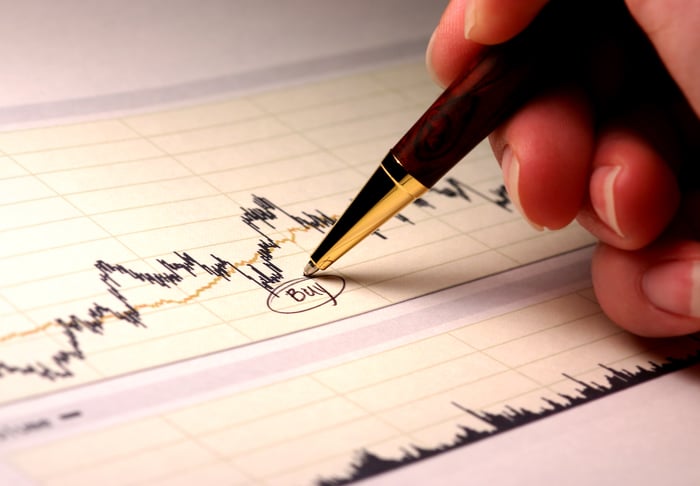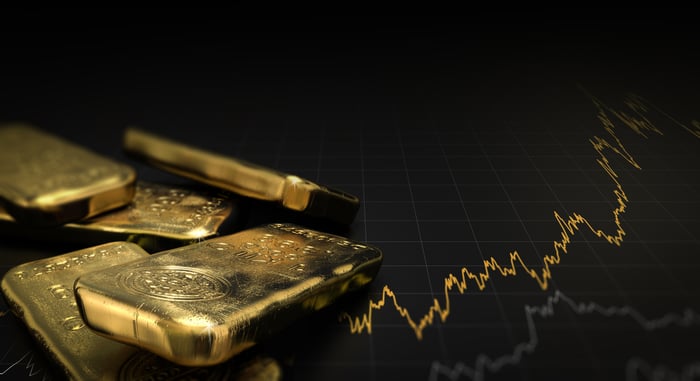Over the last four-plus months, Wall Street and investors have been taken on an historic ride. Panic and uncertainty associated with the coronavirus disease 2019 (COVID-19) initially sent the widely followed S&P 500 lower by a whopping 34% in just 33 calendar days. That's the fastest and steepest descent into bear market territory in history.
However, over the following 11 weeks, the benchmark S&P 500 regained more than 80% of its losses, with the technology-focused Nasdaq Composite galloping to new highs. And mind you, all of this has occurred with the unemployment rate at highs not seen since the Great Depression and COVID-19 cases ticking higher in a number of U.S. states.
While the stock market has historically bottomed out well before the U.S. economy found its trough, there are a number of reasons to believe that the current rally may fizzle and yield to yet another crash. Even if it doesn't, stock market crashes are an inevitable occurrence in the investing cycle. When the next one does occur, use the fear and panic-selling to your advantage by purchasing the following seven top stocks at a discount.

Image source: Getty Images.
Amazon
Just in case you thought Amazon's (AMZN -1.17%) $1.4 trillion market cap meant its high-growth days are in the rearview mirror, think again. Amazon remains the kingpin of the e-commerce space, with roughly 40% of all U.S. e-commerce market share. There's little question that it'll continue to wield its power in the online retail realm and via its Prime membership to keep consumers loyal and within its sphere of products and services.
But over the long run, the Amazon growth story is all about its cloud infrastructure services. Amazon Web Services (AWS) is growing at twice the rate of Amazon's core retail segment but features substantially higher margins. With more than $200 per share in operating cash flow projected by Wall Street in 2023 (that's a near-tripling from 2019), Amazon has a shot to clear $5,000 a share with ease, based on its historic multiple to its operating cash flow.

Image source: Square.
Square
Most folks know Square (SQ -1.14%) for its point-of-sale platform. For years, Square built its seller ecosystem by forging relationships with small- and medium-sized businesses. Though these smaller businesses remain, Square's platform has become considerably more attractive to larger businesses. Based on annualized gross payment volume, more big businesses are using Square's seller ecosystem than ever before, which isn't a bad thing in a consumption-driven economy.
Square may also have a blockbuster growth story on its hands with Cash App. The peer-to-peer payment platform has been gaining users at an extraordinary rate -- from 7 million in December 2017 to 24 million in December 2019. The ability to transfer funds to and from traditional bank accounts, invest directly from the app, and link Cash App to Cash Card for use as a debit card, has caused Cash App's gross profits to soar. When the market crashes again, you'll want Square on your buy list.

Image source: Getty Images.
Kirkland Lake Gold
Although tech stocks are all the rage right now, don't overlook the gold-mining industry, or more specifically, Kirkland Lake Gold (KL), which is benefiting from macro and company-specific catalysts.
On a macro level, global bond yields have plummeted and central banks are pumping copious amounts of money into their financial systems. In other words, panic and fear have made it virtually impossible for income seekers to make much in the way of "safe" money. As long as yields remain near historic lows, physical gold will be viewed as a highly attractive store of value.
On a company-specific basis, Kirkland Lake Gold has the most pristine balance sheet in the entire industry -- $531 million in cash and no debt -- and recorded an all-in sustaining cost of $776 per gold ounce in the first quarter. Based on current spot prices, Kirkland Lake is generating almost $1,000 an ounce in cash operating margin. As an added bonus, the company doubled its dividend and repurchased almost $330 million worth of stock in the first quarter.

Image source: Getty Images.
Intuitive Surgical
When the stock market crashes, healthcare stocks are typically a pretty safe place to park your money. That's why you need to have surgical system developer Intuitive Surgical (ISRG -0.56%) on your buy list. Intuitive has installed close to 5,700 of its da Vinci systems worldwide over the past two decades, which is far more than all of its competitors combined. This means it rarely has to concern itself with client churn.
But as I've noted previously, the best thing about Intuitive Surgical is that its margins are built to improve over time. Modeled after the razor-and-blades business model, Intuitive Surgical's da Vinci system is pricey ($0.5 million to $2.5 million), but it's also costly to build, thereby producing only average margins. This company generates the bulk of its margins from selling instruments with each procedure and by servicing its machines. As more da Vinci systems are installed, these higher-margin segments will grow into a larger percentage of total sales.

Image source: Getty Images.
Miss your opportunity to buy into the Facebook growth story in the early innings? Have no fear, because Pinterest (PINS 0.04%) is giving investors a chance at redemption. Although Pinterest's 367 million monthly active users (MAU) pale in comparison to Facebook's 2.6 billion, what's really impressive about Pinterest is the MAU growth it's generating from overseas users. Last year, international average revenue per user more than doubled and will likely do so a couple of additional times this decade.
Pinterest's nascent e-commerce platform could also blossom into a serious growth story. Since Pinterest's platform is built around sharing interests, it's only logical for the company to monetize its platform by allowing small and medium-sized businesses to engage with potentially targeted consumers. Between ads and e-commerce, a sustained double-digit growth rate is possible for a long time to come.

Image source: Getty Images.
U.S. Bancorp
Though the highly cyclical banking industry is probably not where most investors would think to put their money to work when the stock market crashes, U.S. Bancorp's (USB 1.23%) long-term performance will make a believer out of even the most skeptical investors. You see, U.S. Bancorp has avoided the risky investments that got big banks into trouble more than a decade ago, which has played a big role in it consistently producing the highest return on assets among the biggest U.S. banks by market cap.
U.S. Bancorp has also benefited from the steady transition of consumers to digital banking and mobile apps. This has allowed the company to close branches to lower its noninterest expenses, which, in turn, has helped its bottom line expand. U.S. Bancorp is already at its cheapest valuation in a decade in terms of price-to-book value, and it has a solid track record of returning a lot of capital to shareholders via dividends and share buybacks.

Image source: Getty Images.
Palo Alto Networks
Finally, when the stock market crashes, look to the cybersecurity industry and a company like Palo Alto Networks (PANW 0.04%) to be your rock. Ultimately, no matter how well or poorly the economy is performing, cybersecurity is a necessary service. Especially now, with more people working from home due to COVID-19 concerns, the need to protect enterprise clouds is greater than ever.
What makes Palo Alto Networks so intriguing is the company's ongoing transformation to a subscription-focused service. By minimizing its reliance on firewall products, which can have lumpy revenue recognition, and focusing on high-margin subscription and service revenue, Palo Alto will see a discernible increase in its operating margins over time. Though the near term could be a bit bumpy as the company reinvests heavily in innovation and add-on acquisitions, the end result will be a larger share of the enterprise cloud protection-solutions market.





